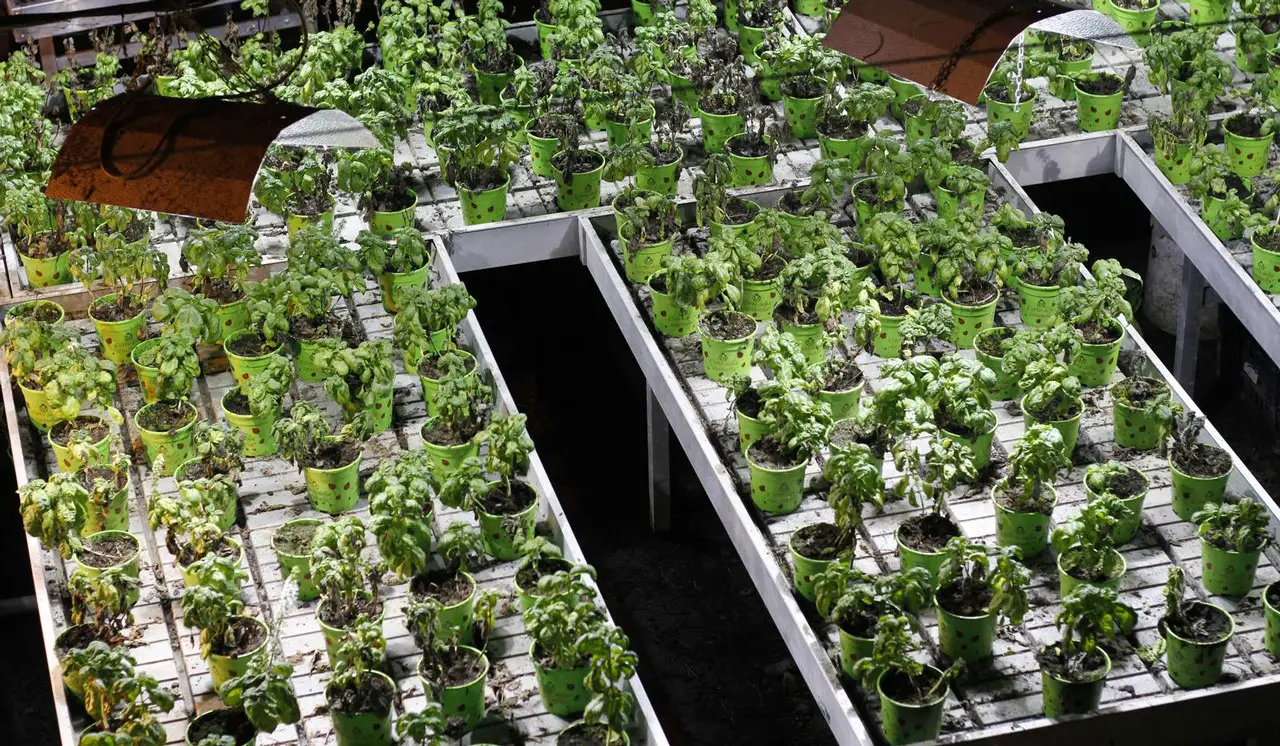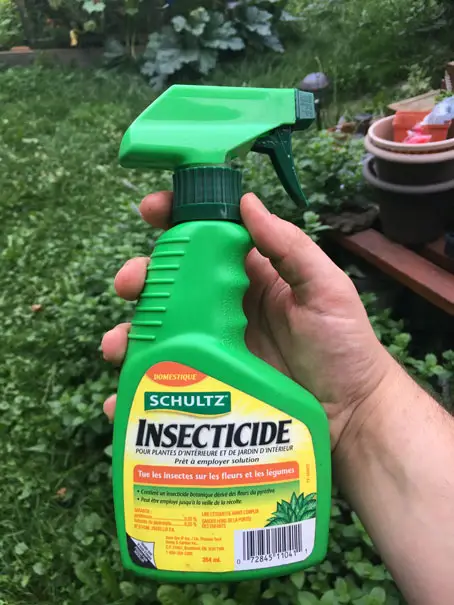The Secret to Growing Hydroponic Basil at Home

This post follows our research editorial guidelines.

Basil is one of the easiest herbs you can grow in a home hydroponics setup. It’s a vigorous herb that adds a distinctive flavor to your cooking, with few demands on even the novice grower. It’s a great option for new growers who want something that’s easy and rewarding.

Table of Contents
Does Basil grow well in hydroponics?
Basil grows very well in hydroponics and is an ideal candidate for small scale cultivation. It can be harvested almost continuously from the same plant a few leaves at a time, or in large quantities for drying and later use.
The Secret to Growing the Best Basil
“One of the easiest and most prolific herbs to grow is Sweet Basil. You haven’t lived until you’ve made fresh pesto from basil grown in your garden.”
Jeff Schalau, Associate Agent, Agriculture & Natural Resources, University of Arizona
The greatest secret of growing basil is simply how ridiculously easy it is. I marvel at how costly those lovely big bunches of basil are compared to how little effort they require. Once germinated and transplanted, they’ll often forge along merrily for years at a time. It seems almost criminal to keep that secret to myself!
How to Start Basil seeds hydroponically
You will need:
- Basil seeds – There are plenty of basil varieties to choose from!
- Starter block or net basket of medium
- Clean, sterile water
- Nursery container
1. Choose your Growing Medium
First, you will need to organize your growing medium, the material that will hold your seeds as they grow their roots.
For most home setups, you can start your seeds off in a lump of growing medium known as a starter block, usually made of rockwool, oasis block, peat or coco coir. You can even make your own from kitchen sponge – I write more on how to do that here.
Another option is to cut to the chase and plant your seeds straight into baskets. Peat, coco coir and clay pebbles will all support your seeds just fine as they germinate. Basil isn’t terribly fussy and will sprout well in the same medium the adult plants need to thrive.
2. Prepare the Growing Medium
Prepare the growing medium. Soak starter blocks thoroughly, and net baskets of clay pebbles or soil free mediums must also be drenched.
Plain water will get the job done, as seeds are self-contained and have all the nutrition they need to germinate.
3. Plant Seeds in Growing Medium
Insert 2-3 seeds into the growing medium. Basil seeds like to be planted quite shallowly, so insert them no more than an eighth of an inch. If you’re using clay pebbles or other soil free mediums in baskets you can even let the seeds rest on the surface of the medium.
4. Water Seeds and Promote Humidity
Place your seed starters in their nursery container, closing the lid to promote humidity. Check daily to make sure the medium stays moist, spraying with water as needed. Inorganic substrates like clay pebbles or perlite need extra help, so add an inch or so of water to the bottom of the nursery if you’ve opted for those.
5. Keep Seeds Warm While They Germinate
Keep the seeds well lit and warm – preferably around 75°F (24°C). Seeds sprout in a week or two and will grow rapidly.
Wait till you see the first true set of adult leaves before you move on to the next step. Roots protruding from starter blocks is another sign you’re ready to transplant.
6. Transplant Seedlings
If you’ve grown your seedlings in a starter cube, it’s perfectly fine to pop the lot in a fresh basket of your preferred growing medium and then put result into your system. If you’ve sown straight into the basket it’s even easier – just transfer the entire net basket into your setup.
Basil will thrive in almost all types of hydroponic setup. It does particularly well in deep water culture setups, like salad tables, Kratky systems and commercial systems like the AeroGarden.

Starting Basil from a cutting
You will need:
- Basil cutting
- Clear vessel, like a jar or glass
- Clean water
1. Choose your cutting
Select a long stem of basil to cut from a mature, established plant. I like to ensure there’s at least three sets of leaves, to allow the basil to produce lots of energy for those new roots. It’s also important to choose a new shoot that has not begun to flower yet as this marks the end of the basil life cycle.
Cut a quarter of an inch or so above the next pair of leaves down. This provides a long stalk with ample space for roots to sprout, and also encourages the parent plant to produce new lateral growth.
2. Water
Pop your cutting in a clear vessel of clean water. If you want to really get things rolling, a little rooting compound added to the water will spur the development of those new roots. I like to use Stim Root by Pro Max and have found they deliver great results. The bottles you get are fairly small, all you need is a light dusting for the plant hormones to kick into gear! – A Little goes a long way.
3. Keep in a Well-Lit Area Away From Direct Sun Exposure
Put your cutting in a well-lit area. Make sure the vessel stays out of direct sun as it overheats the water and tends to kill roots as they emerge.
It can take a surprisingly short time for those roots to come in – sometimes even overnight! Once they are four inches or so long you can move onto the next step.
4. Transplant the Rooted Basil Plant
Finally transplant your new basil plant into its growing basket. Using well soaked medium, plant the seeding so the root mass is evenly distributed in the basket. Be sure to leave enough stem above the surface – an inch or two is good.

How much Light Does Hydroponic basil Need?
Basil loves bright, continuous light. It’s the biggest contributing factor to how fragrant and flavorful your basil leaves will become – even more so than nutrition. Natural sunlight is best, but it’s good to be able to supplement as needed. Aim for 14-16 hours a day.
A high output broad spectrum grow light, used for extended intervals, is best for basil. This is easy enough if you’re using a system like the AeroGarden, as the kit comes complete. If you’re building your own rig, consider a set of broad-spectrum lights.
What pH Should The Water Be For Hydroponic Basil?
Basil does best in neutral to mildly acidic conditions, at around a pH of 5.5 to 6. The more acidic end is best, as it prevents root disease in addition to making nutrients readily available for the plant.
Interestingly, basil will thrive at pH as low as 4, provided you ensure a good nutrient ratio in your solution. It’s not a tactic I’d recommend to beginner growers, but if you have a bit of experience, it may be worth experimenting.
Which Growing medium Is Best For Hydroponic Basil
Basil will grow in basically anything. They’re an excellent candidate for clay pebbles, perlite or other inert mediums with good flow through. They have vigorous, fast-growing roots that anchor readily in heavily textured mediums. No matter what system you are using, basil will be a great fit.
Providing the Right Nutrients
A general-purpose leafy greens nutrient blend is great for growing basil – after all, it’s leaf growth that we’re looking for.
Keeping an eye out for micro nutrient deficiencies. Those lovely leaves will change color, wilt, or develop spots and lesions if they are lacking in nutrients. Magnesium is of particular concern, so watch out for yellowing between the veins of older leaves. You may need to supplement a standard nutrient blend with additional magnesium.
Pruning Hydroponic Basil
Basil is such a fast grower you’ll need to prune back frequently. It’s a delicious problem to have!
To prune, seek out the tallest shoots and cut back to the desired height, leaving a good clearance for new growth. Cut above a new leaf pairing where possible. This will prompt lateral growth and result in a bushier basil plant. Pruning is especially important as flowers begin to appear. If basil flowers are not pruned the leaves will begin to lose their robust flavor as the plant focuses energy towards producing seeds.
You can also thin the basil out by removing individual leaves. Aim for mature growth, large leaves that are starting to curl around at their perimeter. They’re the richest in color – and the richest in flavor, too.
Spacing Needs
Basil will grow happily in tight groups. While rule of thumb suggests four plants per square foot, basil will thrive as dense as nine plants per foot, provided you keep your lighting intervals long and bright, and maintain good ventilation.
Temperature Settings
Temperature can be a tricky thing to balance in a hydroponics setup, especially when growing a heat loving plant like basil.
You’ll need to keep the system between 70-75°F (21-24°C) to maintain good root growth. It is, however, a balancing act – too warm and you risk fungal or algal blooms in your nutrient solution. Too cold and your roots will become stunted.
Common Basil Pests
Cutworms and aphids adore basil. The former aren’t worms, but rather are small caterpillars, usually green or brown. The latter show as small sesame seed like bug, clustered in thick groups around stems and leaf veins. If your setup is outdoors due to space or to take advantage of natural light, they’re going to show up sooner or later.

Even if you’re indoors, you can still wind up with an infestation. Mealy bugs, white fly, spider mites, thrips and scale aren’t fussy and will readily make a meal of your hydro setup too.
It pays to be careful when treating pests on food crops – after all, you don’t want to be eating poison, too. Insecticidal soaps are best for controlling pests on basil and other herbs. You’ll have to apply every other day for a week or two, as it needs to actually touch the insect to work – it’s a mechanical killer, not a chemical one.
Common Basil Diseases
Basil is particularly susceptible to fungal diseases, especially root rot from pathogens like Pythium or Phytophthora. These diseases thrive in hydroponic solution, and once they get a foothold it’s hard to shake them.
One way to avoid this is to maintain a low PH. I’ve also read suggestions of a teaspoon or so of hydrogen peroxide in with solution, or rinsing infected roots in a 3% hydrogen peroxide dip.
The other big one to watch out for is downy mildew. It loves the moist air in most greenhouses, so a densely planted hydroponics setup is an ideal playground for this nasty little pathogen.
You can prevent downy mildew with good ventilation. It can be a challenge to control with fungicides, and many sources suggest just destroying the whole crop. I’ve had modest success with a dilute solution of one tablespoon of castile soap and one tablespoon cider vinegar in a gallon of water.
Final thoughts
Basil is so easy to grow it almost feels like magic. There’s a reason AeroGarden sets come with basil seeds as a standard – they’re a great starter crop for anyone exploring hydroponics.
